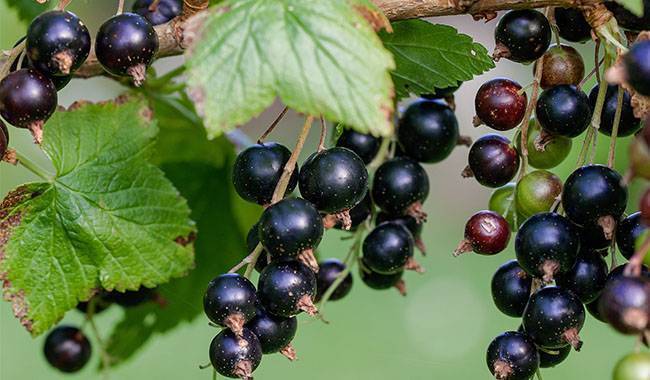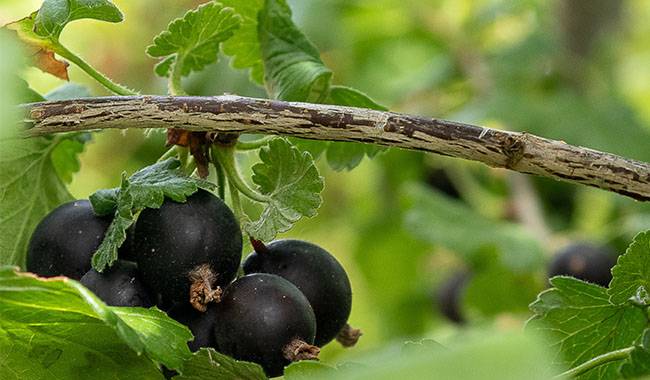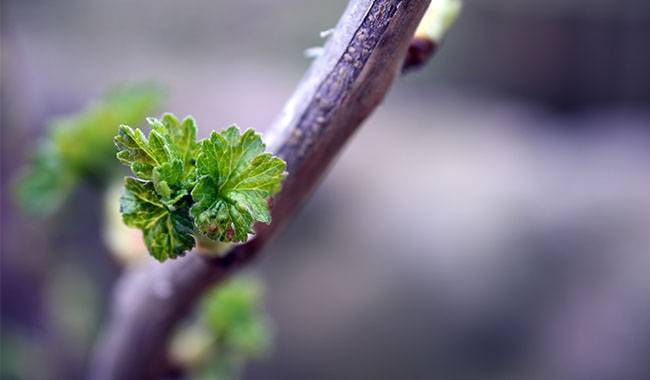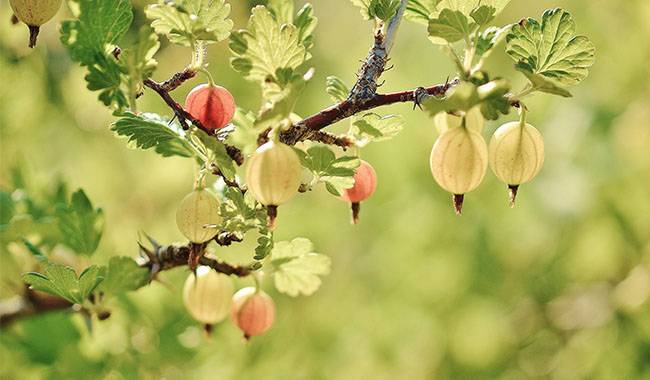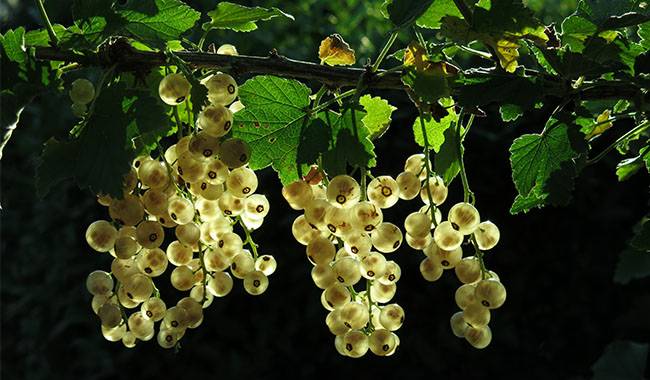
Did you know that hundred years ago, currants were more popular than black currants? And it was this aphid, commonly known as powdery mildew, that knocked it out of the game. Appearing then after the Colorado potato beetle (it is thought to have come from the American continent), it began to exterminate the Currant by the hectare, attacking everything, buds, leaves, fruits, and shoots. The bush simply decayed before the eyes of its owner, who could do nothing about it.
Fortunately, thanks to the hard work of breeders, plastic varieties emerged, as well as those that, although affected by powdery mildew, did not reach such a serious level. No one has canceled treatment with fungicides either, so Currant bushes are slowly recovering. And it is necessary to take proper care of currant bushes in order to help them at least catch up with the bumper crop. And not only in the spring and summer but also in the wet and rainy fall.
BASIC MEASURES TO TAKE CARE OF CURRENT – A BRIEF INTRODUCTION
Few people know it, but Currant is a timeless culture and is so productive that a bush of the malachite variety can produce at least half a year, adding 2.2lb (1 kg) of berry products per year. Thus, from a well-developed Currant bush, if you take care of it properly, you can collect both half a dozen delicious and large berries, which can and long storage, transported over long distances, and consumed fresh and processed. Do not forget that Currant’s “Royal Jam” is still in vogue.
So first let’s briefly list the main activities we need to do with Currant bushes during the fall, and then describe each one in more detail so you will know what to do and how to do it, while you will have the least amount of questions.
The first thing to do is to pay attention to the Currant bushes clumping area and remove its leaves and branches. Then you should get rid of all weeds, after that excavate the bushes area, then moisturize and water it, after that fertilize it in autumn, prune it near mid-autumn, then pay attention to the rows, loosen them properly or even dig them up, and finally, after the preventive treatment, mulch the surface of the Currant bushes area.
REMOVAL OF CURRANT BUSHES DEBRIS IN AUTUMN
What’s wrong with it? There are piles of Currant leaves, branches, crushed, decayed, and intact fruits on it, but starting to rot, and other trash that has managed to be crushed. All of this should be raked very carefully so as not to prick your hands (wear gloves beforehand) and set the shoots aside, away from the Currant bushes. And together with other leaves and twigs, this all burns until ash is formed. By the way, the resulting ash is a very valuable natural fertilizer. Do not write off wood ashes and under no circumstances should you simply throw them in the garbage.
WEED CONTROL IN THE CURRANT BUSHES AREA IN AUTUMN
After the Currant bushes area is cleared of fallen leaves, branches, and other debris, only weeds are left on it – crushed by rakes. Very often, weeds in Currant bushes are dominated by couch grass. Be aware that he strongly repressed this culture, so the use of wheatgrass is strictly a mandatory struggle.
Of course, it is possible to use contact-acting herbicides, i.e., they work only when the poison comes into direct contact with the plant. Such herbicides should not be written off, and they are often even used on plots where medicinal plants are grown. In our case, if you have very few Currant bushes on your site, it is possible to arm yourself with a small spade and try to get rid of the roots of the abominable couch grass after a good rain or watering, because even if 0.4inch (cm) remains in the soil, the couch grass will revive again.
DIGGING IN THE CURRANT BUSH AREA IN AUTUMN
There are two ways here – digging or not digging. If you live in central Russia, where frost rarely penetrates Currant roots and no additional mulching of this crop is needed (in this case just mulching the roots with mulch), then digging in the bush area can be done by placing the spade along with the roots and not going deeper than 2-2.4inch (5-6 cm). When digging in the fall in areas of Currant bushes it is important to make sure that the soil is turned over but not crushed, but it is also important not to expose the Current root system or the roots may be affected even in your area.
Digging will allow the overwintering stages of pests and diseases to surface, they will die because they are frozen in the wintertime. In addition, recultivation will enhance the exchange of air and water, allowing the warm, hot autumn days to evaporate the excess water and allow the roots to breathe and grow properly: in fact, the small roots that absorb water will continue to develop even during defoliation.
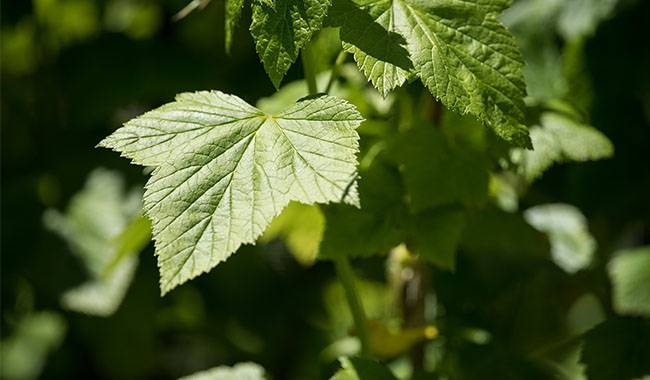
WATERING CURRANT IN AUTUMN
After the soil has been loosened, you can water Currant bushes in the fall. Why do you need it? Exactly like fruits and other berry crops, sufficient water in the soil does not freeze them to a very great depth and also activates the plant’s growth process during the provocative winter thaw – the thaw. In addition, in moisture-rich soil the roots of Currant bushes will develop as efficiently as possible until frost, they will absorb the maximum amount of water in the plant, they will not fear the winter dryness when on sunny days from the surface of Currant bushes can be seen a slight, but evaporation of water. If in autumn there is very little water in the soil, the plants do not have time to accumulate water and the shoots will dry out easily. Although this doesn’t happen often, it can happen.
FERTILIZING CURRANT IN THE FALL
It is important not to apply nitrogen now (in autumn) because nitrogen activates the growth process in the above-ground parts of Currant bushes and all the growing parts of the buds and flower buds that start to swell will simply die in the near future because winter is coming.
Usually, in autumn, dry phosphorus and potassium fertilizer are applied under Currant bushes. Under shrubs under five years old, you should use 15-20 grams of calcium superphosphate and 10-12 grams of potassium sulfate, under older plants this dose can be safely doubled. You can also do and wood ash, under each bush is allowed to do 250-300 grams of wood ash, the rest of the fertilizer Currant bushes do not need, well in the winter did not use them.
PRUNING CURRANT IN AUTUMN
Around mid-autumn, you can safely prune the bushes without worrying about culture. Here it is advisable to arm yourself with a very sharp trimmer and thick gloves to protect against thorns. It’s also a good idea to bring some alcohol to wet (to disinfect against infection) the sharp blades of your pruners as you move from bush to bush. First, have a good look at the Currant bushes, usually, the branches that prevent their proper development are themselves conspicuous and, simply put, they are clearly visible.
Cut off all Current branches that broke off during the harvest, all branches that lie directly on the ground, or branches that slant to the ground to the point where the berries touch the soil and begin to rot. Next, watch out for thickened branches: they usually grow strictly in the center of Currant bushes, causing them to thicken, from where they stop being blown by the wind, forming fungal diseases, and the harvest comes to the periphery of the canopy (i.e. the quality and quantity of the harvest decreases), so such branches should be cut back, and the cut areas should be covered with garden varnish or garden paint.
Try to remove Currant shoots that are more than five years old; here you may break any seconds, so it’s best to use a garden saw and make sure to cover all cuts with garden varnish or garden paint (just in case).
Ideally, after autumn pruning of six or seven year old Currant bushes, no more than five or six of the strongest, most developed laterals should be left in the bush, and these should be the strongest, strongest, youngest, fresh carrying laterals, of course, evenly positioned and radiating with the bush. It is these shoots of Currant bushes that will both grow well and be fully harvested in the coming year.
TREATMENT OF CURRANT ROWS SPACING IN AUTUMN
For those who have several rows of Currant bushes, it is necessary to pay attention to the treatment between the rows, making sure to dig well there and it is possible to leave any area uncovered. Joint digging should be combined with weed removal and treatment against possible pests and disease stages.
Preventive treatment of Currant plants and soil in the row spacing
To protect Currant plants from possible winter stages of pests and diseases, it is best to treat plants with 2% Bordeaux mixture and soil with 3% Bordeaux mixture. You can treat plants and soil with Benomyl at your own risk, but you already know all about them.
MULCHING CURRANT BUSH AREAS IN THE FALL
Finally, if you are not a resident of the center but of a more northern part of the country, then you will need to mulch the roots of your Currant plants. For this kit, dry and healthy fallen leaves should be mulched with spruce branches so it doesn’t fly around the site, as well as needles, sawdust (but be aware that they can slightly acidify the soil), humus (which, by the way, should not be removed in the spring; it becomes an additional natural spring fertilizer when loosened), and you can also use the newer non-woven mulching materials. Usually, you don’t need a lot of covers, you just need to cover the bush area.
And in spring you definitely need to remove the mulching material in time, because it will keep the soil warm for a long time, and we don’t really need that.
That’s all we want to tell you about how to care for Currant in autumn. In principle, this culture is unpretentious, but here the same powdery mildew or leaf necrosis is a frequent occurrence, so do not forget to treat it properly in the spring. Now we wait for winter and the first snowfall, which will cover the gray ground for up to six months.




